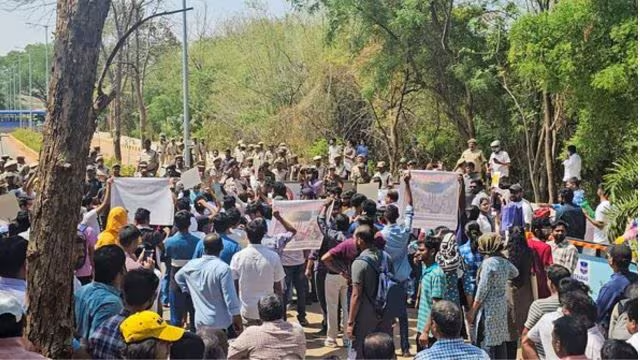
New Delhi, April 4, 2025 – In a significant environmental ruling, the Supreme Court has put an immediate stay on the clearance of 400 acres of green cover near Hyderabad University. The apex court has also directed the High Court registrar to submit a detailed report regarding the matter, underscoring the need for legal scrutiny over land use and environmental concerns.
The issue revolves around a large tract of land in the vicinity of the University of Hyderabad, a region known for its rich biodiversity and green landscape. Environmental activists and local residents had raised alarms over the proposed clearance, fearing it could lead to deforestation, disruption of local flora and fauna, and adverse ecological consequences. The land in question is reportedly under dispute, with claims of encroachment and proposed commercial development.
A bench led by Chief Justice D.Y. Chandrachud took cognizance of the matter following a petition filed by environmental groups, arguing that the clearance would not only violate ecological norms but also set a dangerous precedent for urban expansion at the cost of nature. The petitioners emphasized that the green zone serves as a critical lung space for Hyderabad and should be preserved rather than being repurposed for developmental activities.
Responding to the plea, the Supreme Court has now sought a comprehensive report from the registrar of the Telangana High Court to ascertain the legal status of the land and the approvals granted for its clearance. The court has instructed that until further review, no construction or deforestation activities should take place in the area.
The ruling has been welcomed by environmentalists, who see it as a crucial step in preserving Hyderabad’s rapidly shrinking green cover. “This is a victory for nature. We need to balance development with environmental conservation. The green belt around Hyderabad University has been home to diverse wildlife, and its destruction would be irreversible,” said an activist from a local environmental organization.
On the other hand, real estate developers and government officials involved in the land’s allocation argue that urban expansion is inevitable and necessary to accommodate Hyderabad’s growing population. Some have claimed that due diligence has been followed, and any legal objections will be addressed in the coming hearings.
This is not the first time that land near Hyderabad University has been at the center of controversy. In previous years, multiple attempts at encroachment and unauthorized construction have been met with resistance from students, faculty, and conservationists. The latest Supreme Court intervention signals a renewed focus on sustainable urban planning and environmental protection.
With the matter now under judicial review, the Telangana High Court is expected to provide its report in the coming weeks, after which the Supreme Court will make a final decision on the fate of the 400-acre land parcel. Until then, environmentalists remain hopeful that the court will prioritize conservation over commercial interests, ensuring that Hyderabad retains its green spaces for future generations.



